Memorial to Fallen Officers of Southern Nevada
No police musuem would be complete without a memorial to those officers who have given their all for our safety. These heroes are chronicled here.
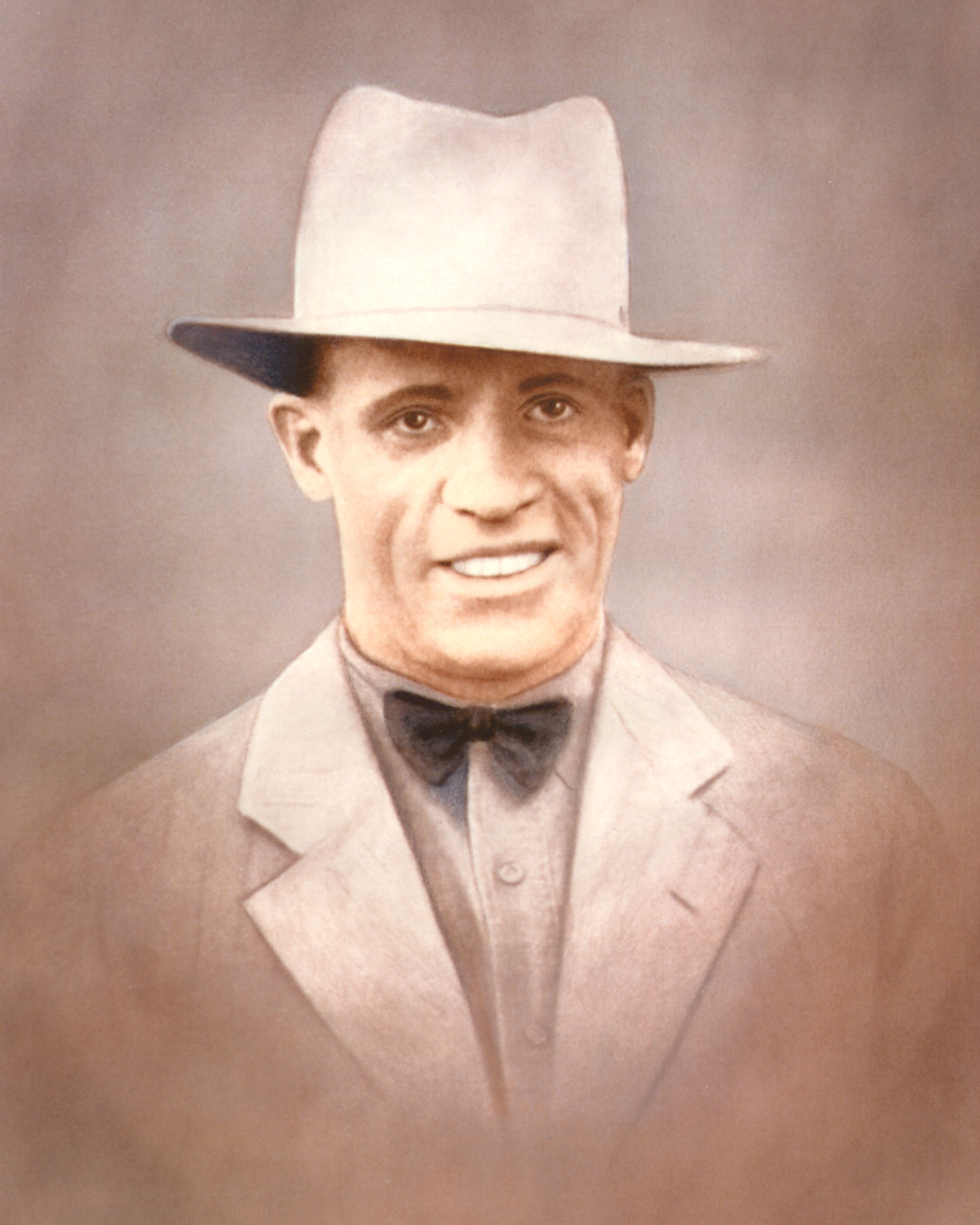 |
Ernest James May was the first Las Vegas Police Officer to give his life in the line of duty. He joined the Department in the early 1930's when the city boasted two police cars, and members of the police department could be counted on one hand. Uniforms were not worn in those days, and while radios were in existence, they were too expensive to be purchased by the police force. On June 8, 1933, at 7:45 p.m., two men called the police to report a drunken man shooting wildly at the Clark Auto Court on South 5th Street. Officer May was assigned to the call. A second call from two women stating that someone had shot at them at the same location prompted City Constable Joe May (Earnest's brother) to also respond. Upon his arrival, Joe discovered the motel proprietor dead at the west end of the motel and Officer Ernest May dead at the east end. Witnesses testified as to what had occurred. Officer Ernie May had driven his police car into the auto court, and as he exited, was shot in the chest by the motel proprietor. Although mortally wounded, May emptied his revolver at the man, striking him three times. The suspect had been drinking heavily and had made statements that he would kill the first officer to arrive. Ernest May died at the age of 37, leaving a widow and seven children ranging in age from six weeks to 15 years. |
| Deputy Sheriff Winnie Hansen was a member of the Clark County Sheriff's Department. On December 26, 1950, Deputy Hansen, along with his partner Deputy William Wolf, were driving east on Boulder Highway when they observed a vehicle that seemed out of control. The officers stopped the vehicle in a safety zone in front of the Green Shack Restaurant. located on Boulder Highway, 500 feet from East Charleston Boulevard. Both deputies exited their vehicle along with the other driver. Deputy Hansen was standing to the rear of the stopped vehicle, Deputy Wolf and the citizen were standing by the passenger door. Deputy Wolf observed a vehicle coming into the safety zone in their direction and immediately pulled the citizen and himself out of the way. The on-coming car struck the door of the vehicle they had stopped, striking Deputy Hansen. Hansen was transported to the County Hospital where he died from his injuries at the age of 56. The driver of the striking vehicle was arrested and convicted of Vehicular Manslaughter. |  |
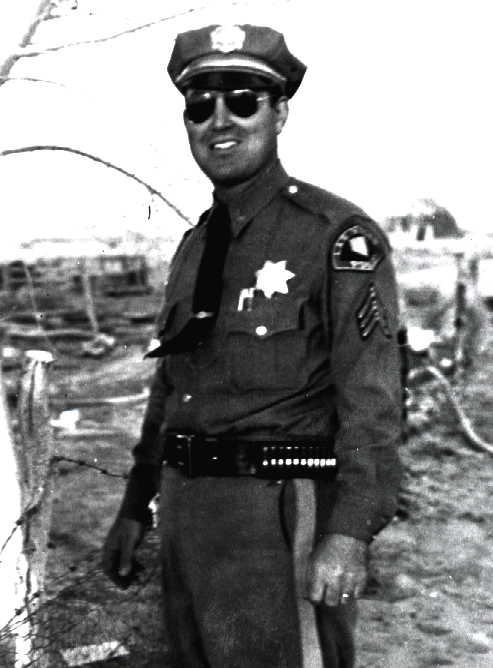 |
Robert F. Dula joined the Las Vegas Police Department on June 16, 1952, at the age of 22 years. After working in the Uniform Division for a little over a year, he was transferred to the Detective Bureau. Officer Dula was promoted to sergeant on January 16, 1954, at the young age of 25, and a year later transferred to the Traffic Division as the Swing Shift Supervisor. On April 8, 1955, at 2250 hours, just ten minutes before the end of his shift, Sergeant Dula and his partner received a call to aid a citizen who was reported lying injured in the street at Las Vegas Boulevard and Fremont Street. The two motorcycle officers turned on their red lights and sirens, and proceeded west on Fremont towards the intersection. At 12th and Fremont Streets, Sergeant Dula, traveling behind his partner, was stuck broadside by a car operated by two juveniles who immediately left the scene of teh accident. Sergeant Dula's motorcycle was thrown some 100 feet and into two other vehicles. Sergeant Dula, critically injured, was rushed to the emergency room at Southern Nevada Memorial Hospital. A team of doctors tried in vain to save his life; however, he died at approximately 0120 hours. Sergeant Dula was 26 years old and was survived by a wife and two small children. |
| Wilbur Eugene McGee joined the Las Vegas PD on June 22, 1954. He began his career with the Police Department as an undercover investigator in the downtown area. During his short 17 month career, he received several Departmental Commendations for arrests of wanted felons. On November 2, 1955, a burglary was committed in the early morning hours. The victim of the burglary reported the theft of $300 in coins, a pellet gun and a .22 calibre revolver. Later that same day, the police were called to an old downtown hotel where a maid showed them a large amount of coins taken from a tenant's room. The coins were from the burglary, and the room was occupied by a 25-year-old convicted felon. The suspect was not present, so the officers left, asking the desk clerk to call when he returned. At 1442 hours, the suspect returned. Officer McGee arrived first and entered the hotel. McGee arrested the suspect and began a search. The suspect handed McGee the pellet gun, and McGee started to handcuff him. The suspect pulled a second gun from his waistband and shot the officer four times. As the officer lay on the floor, the suspect took his revolver and fled out the back. The backup unit arrived only a couple of minutes after McGee had entered the hotel, but it was too late. Officer McGee died at the age of 33, survived by his wife. When the suspect was captured a short time later, he was still carrying the slain oficer's handgun. | 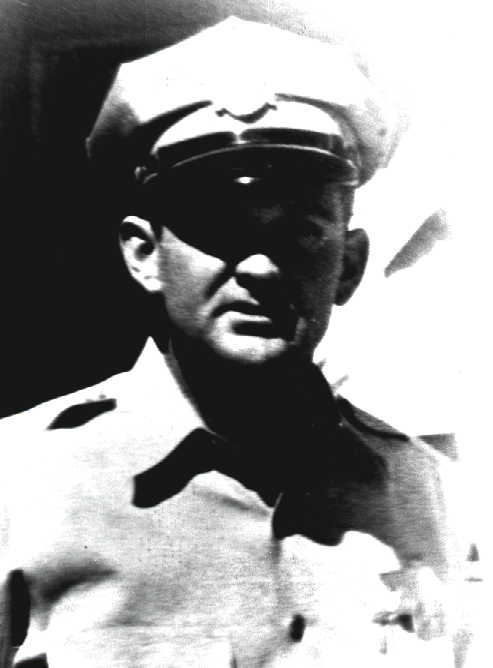 |
 |
Deputy Sheriff George Hart was appointed to the Clark County Sheriff's Department on July 5, 1956. His short-lived career came to a tragic end on October 25, 1957, barely one year following his employment. While booking a drunk driver, the prisoner struck Deputy Hart in the stomach. Hart succumed to complications from the injury on November 12, 1957. He was 40 years old and left a wife and five children. |
| William Robert Fortye joined the Las Vegas Police Department on October 10, 1961. He was a great cop with an almost uncanny ability to spot a crime in progress. After two years in Patrol, he transferred to the K-9 Corp where he and his partner "Burgie" proved to be outstanding crime fighters. On one occasion, Officer Fortye apprehended a robber as he was chocking a woman at a local hotel. He probably saved her life. Bill Fortye was well-liked by his fellow officers and was the kind of man who always looked for opportunities to help others. On October 28, 1966, at 0220 hours, he radioed that he was stopping a northbound car on Highland Drive. There was nothing to indicate that it was anything but a routine stop, but ten minutes later, Bill Fortye was dead. The first officers arrived to find him lying alongside his patrol car, his dog standing faithfully by his side. His assailant had pulled Fortye's gun from the officer's cross-draw holster and fired three times. Burgie immediately attacked the suspect, maulling his hand. The killer fled but was captured a short time later. Officer Bill Fortye, a five year veteran, died at the age of 32. He was survived by his wife and six-year-old daughter. | 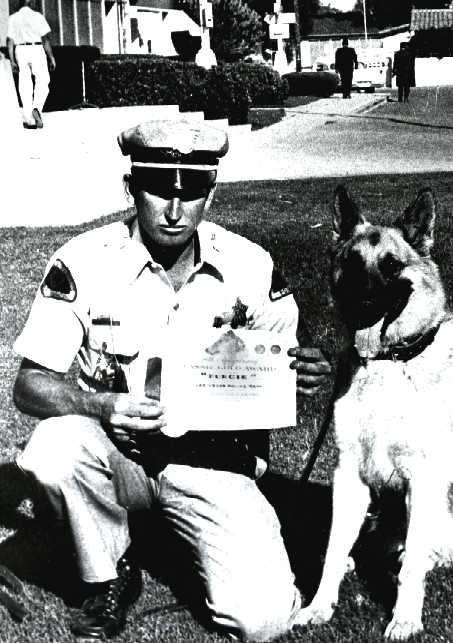 |
 |
Sergeant Paul De Weert joined the Las Vegas Police Department in January of 1948, and was known by his fellow officers as "Pappy." He spent only a short time in the Uniform Division before being transferred to the Detective Bureau. His personnel file contains many citations for solving the most difficult cases. He taught dozens of rookies, many of whom became leading detectives. Former Police Chief Lorin Bunker said of him, "He inspired confidence in all the officers." Sergeant De Weert was a family man who also loved to hunt and fish. The popular "cop's cop" spent most of his life serving either his country or his community. He was only a short time away from retirement when all of his dreams were destroyed on Sunday evening, on October 8, 1967. A drunk ex-convict shot down the unarmed 20-year veteran in cold blood at a dark North Las Vegas intersection at 2030 hours. Sergeant De Weert was off-duty and had approached the individual to talk to him. At age 60, De Weert had survived World War II as one of three original members of his 2nd Marine Division Unit and several previous police shootings. He died just two blocks from his home and left a wife and two teenage sons. |
| Officer James Richard Rogan joined the Clark County Sheriff's Office in 1970 and served on the Department for approximately eights years before his tragic death. He was an active cub scout leader and devoted father and friend. On February 22, 1978, while working as a Traffic motorcycle officer, he made a routine stop in the 2000 block of South Paradise Road. As the officer was writing a citation, the driver shot him then stood over him and emptied an automatic handgun into him. The killer had committed a series of crimes in Alaska and thought that Rogan had discovered that fact. The suspect was killed by police on the following morning after an all-night, house-to-house search. Jim Rogan died at the age of 41, leaving a wife and six children ranging in ages from two to eighteen years. One of his sons, also James Rogan, was hired as a police officer with the Las Vegas Metropolitan Police Department twenty years later in 1998 and proudly serves today as his father did before him. |  |
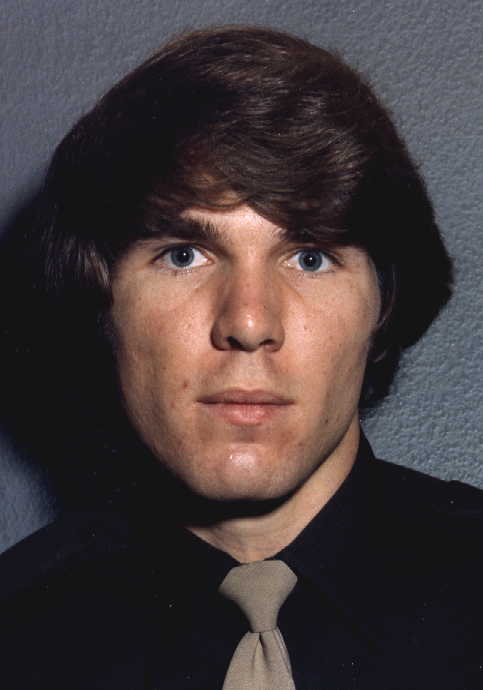 |
Corrections Officer James Walter Harbin II joined the Las Vegas Metropolitan Police Department on Februrary 18, 1979. Approximately six weeks later, Officer Harbin was shot and killed in a convenience store where he had stopped while enroute to work. The store clerk had tried to warn him that a robbery was in progress, but because he was in a uniform almost identical to that of a police officer, he was mistaken for a police officer and shot as he entered the store. The suspect was later apprehended after holding police at bay for several hours. Officer Harbin died at the age of 22 and was survived by his parents. |
| Officer Clark Anthony Wooldridge joined the Las Vegas Metropolitan Police Department in August of 1978. While responding to a fight and accident call on August 12, 1979, his patrol car collided with another vehicle. He was pinned under the vehicle which had overturned and subsequently died at the hospital. The fight and accident call that led to this officer's death turned out to be a false alarm -- there was no fight or accident. Officer Wooldridge died at the age of 22 and was survived by his wife of less than two years. | 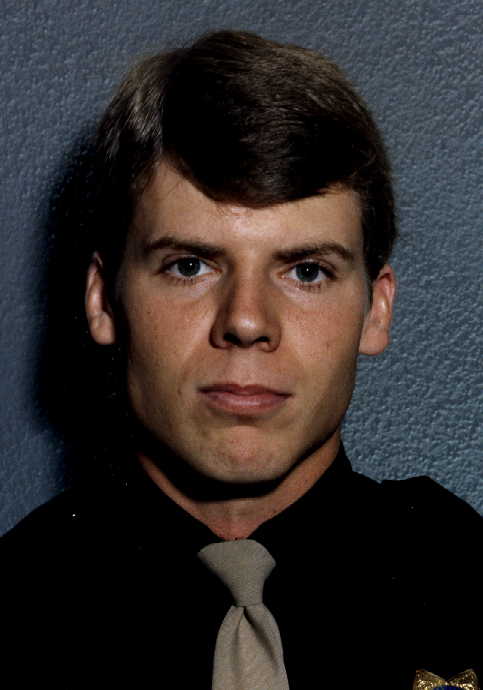 |
 |
Police Officer Marc Kahre joined the Las Vegas Metropolitan Police Department as a cadet on October 2, 1973, and became a commissioned officer in 1975. On October 11, 1988, at approximately 1215 hours, he spotted a car with a suspect who had earlier fired several gunshots through his ex-girlfriend's front door. Marc followed the vehicle on his police motocycle near the 4900 block of Chantilly Drive while awaiting a backup. The suspect stopped abruptly, jumped out of his car and began shooting at Marc. He was hit once in the forehead. Officer Jim Hulsey had arrived at that time and immediately returned fire, striking the suspect five times; however, the suspect was still able to re-enter his vehicle and drive away. The suspect became involved in a traffic accident at Lamb and Charleston and shot himself in the head. He was later pronounced dead at the hospital. Officer Kahre died at the age of 34, leaving a wife and two sons, ages 10 and 8. |
| Officer Donald C. Weese joined the Las Vegas Metropolitan Police Department on September 11, 1990. On the night of October 23, 1992, while working as a Field Training Officer with his partner Eric Kerns, he responded to a gun call. While enroute, his car collided with another vehicle and then struck a traffic signal pole at Charleston and Eastern. Officer Weese sustained massive injuries and died at the scene. This traffic accident occurred just 25 minutes before the end of Officer Weese's shift. He was a large, muscular man who was well-liked and known as a "gentle professional." His final assignment was with Squad NE31 at the Northeast Area Command. He was 25 years old at the time of his death and was survived by his parents. | 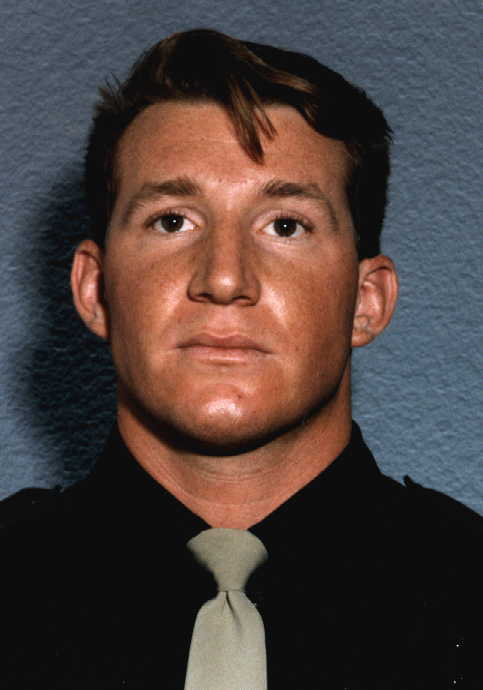 |
 |
Police Officer Russell Peterson joined the Las Vegas Metropolitan Police Department on April 17, 1990. On March 24, 1998, he was training volunteers for the Department's Search and Rescue Unit. Officer Peterson had recently returned from an ice rescue school and was sharing his new skills at the Mount Charleston Range just North of Las Vegas, a site where their unit had been called upon to rescue stranded climbers on many previous occasions. A large ice block broke away from above him and knocked him from the side of the mountain and to his death. He is shown is this photograph dressed exactly as he was at the time of his death. He loved climbing and participating in rescue operations, as you can see in the photo. |